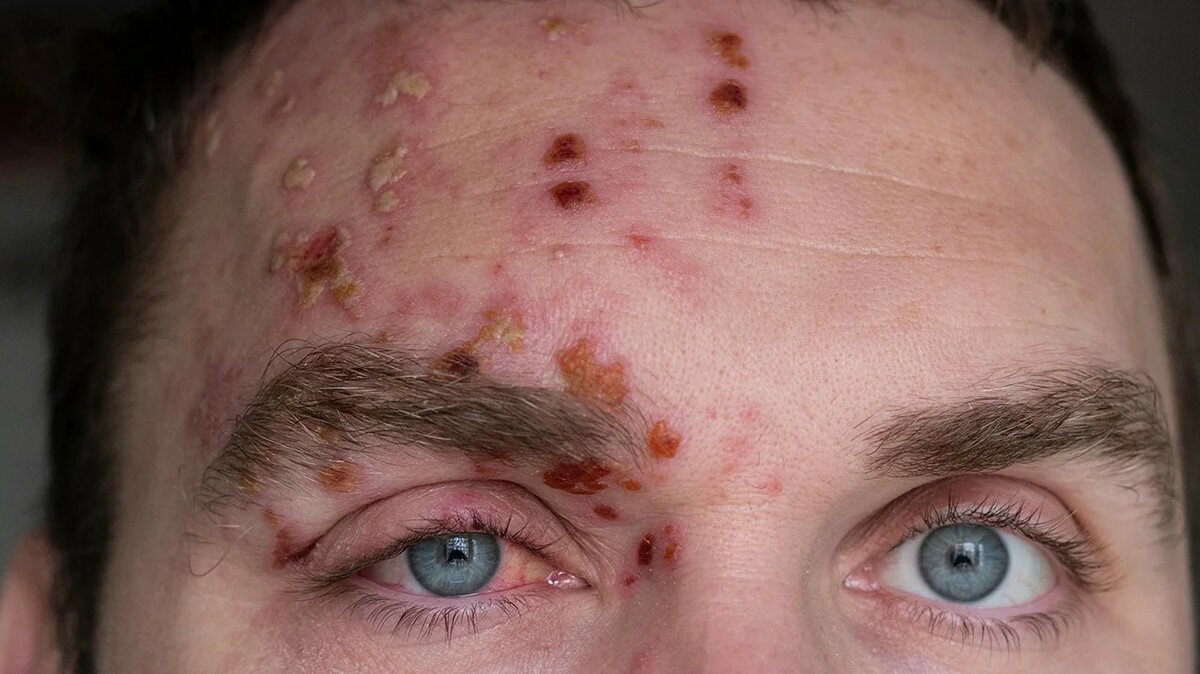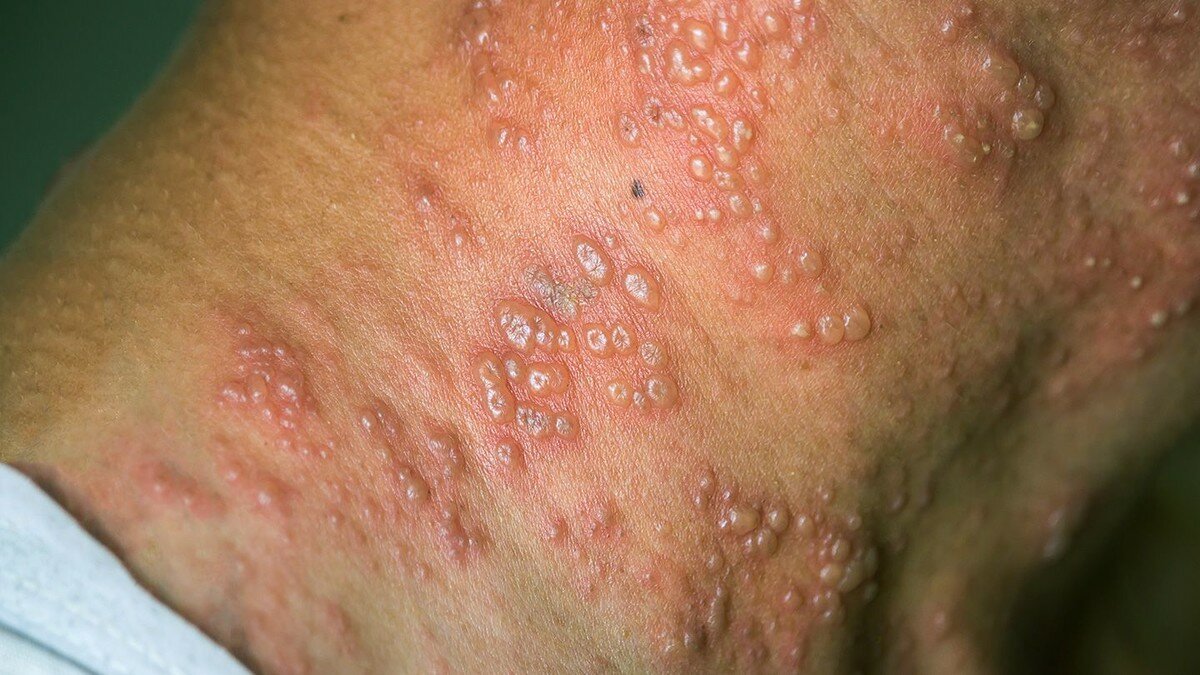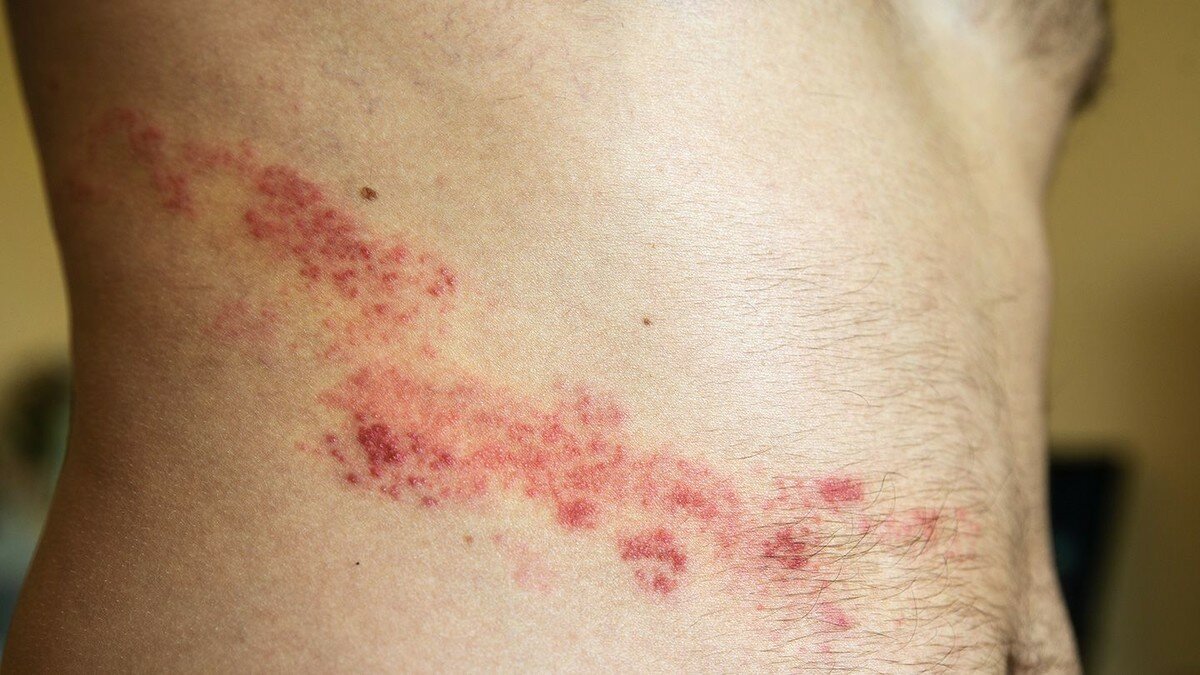What is shingles?
Shingles (herpes zoster) is a viral disease that causes red spots and fluid-filled blisters. In the typical form, the rash usually occurs along the nerve pathways affected by the virus, which resemble a belt. Types of atypical shingles include:
- abortive - characterized by the absence of a rash and pain, although the skin swells, but the redness and swelling quickly pass;
- bullous - instead of small blisters, the patient experiences large formations, and symptoms of general intoxication increase;
- hemorrhagic - the rash is filled with lymph with a large amount of blood, microhemorrhages occur in the skin, the pathological process affects the deep layers of the skin;
- gangrenous - deep and long-lasting ulcers appear at the site of the rash, the patient’s general condition is severe;
- generalized - the rash covers up to half of the body and may appear on the mucous membranes (for example, in the oral cavity).
The severity of the disease is directly related to the general state of the immune system. In people with weakened immunity (due to radiation therapy, chronic diseases, age), the infection is most acute, more often leading to complications.
Ringworm appears as red, pink, or brown spots that may be smooth or slightly raised above the surface of healthy skin. The spots may contain small blisters filled with clear fluid.
The spots can be small, the size of a pea, or large, up to 10 cm in diameter. Unlike lichen Gibert , herpes zoster usually appears on one side of the body, less often on both sides. What shingles looks like can be seen in the photo.
Causes of Shingles
The cause of shingles is the Varicella-Zoster virus, which causes chickenpox when it first enters the body, and after recovery, it becomes inactive and remains in the cells of the spinal cord. Its reactivation against the background of decreased immunity leads to the appearance of herpes zoster symptoms. Risk factors for shingles:
- radio and chemotherapy;
- hypovitaminosis;
- diabetes mellitus ;
- a sharp change in climate zone;
- weakened immune system (due to human immunodeficiency virus, after organ transplantation);
- hypothermia;
- stomach ulcer ;
- previous surgeries.
Uncontrolled use of medications (such as steroids) also weakens the immune system and increases the likelihood of the virus becoming active. Long-term exposure to allergens or toxic substances (such as at work) also increases the risk of ringworm.
Symptoms and stages of shingles
The incubation period of shingles is from 10 days to three weeks. However, unlike chickenpox, which manifests symptoms after this period, shingles can persist in the body for decades.
Shingles often begins with pain, burning, or tingling of the skin at the site of the nerve lesion. Shingles pain can be stabbing, sharp, burning, or pulsating.
The characteristic sign of the disease is a rash that is bright red on light skin and brown on dark skin. Small rashes may form clusters (large areas), usually on one side of the body. Other symptoms of shingles include:
- enlarged lymph nodes;
- increased sensitivity of the skin;
- headaches and dizziness;
- numbness of the affected area of the body;
- sensitivity to bright light;
- increased fatigue;
- muscle weakness;
- chills and fever.
Also, with shingles, fluid-filled blisters (vesicles) may appear on the back and abdomen, which open up on their own and become covered with a yellow crust. With shingles on the legs, coordination problems and limping may occur. Shingles in children can manifest as severe weakness, capriciousness, irritability, and insomnia due to severe pain.
The rash may also appear in and around the eye, causing pain, burning and throbbing, swelling of the eyelids, redness and watery eyes. Increased rash and nerve damage may impair vision and hearing, and make it difficult to move one side of the face.
The color, quantity and severity of skin rashes vary depending on the stage of lichen.
Stage of lichen | Description | Duration |
Prodromal | Shingles does not typically cause a rash at the onset, but it can cause burning, pain, or numbness in the skin along the affected nerve. | Two to four days |
Erythematous | The initial stage of shingles is characterized by the appearance of a red or pink rash along the nerve | Three to five days |
Vesicular | Formation of fluid-filled blisters on a red rash | Four to seven days |
Cork | The rash dries up and forms crusts. | 7-10 days |
Scar | Scarring and changes in skin pigmentation. | Two to four weeks |







0 Comments